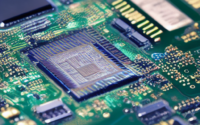How VR is Transforming Physical Rehabilitation
How VR is Transforming Physical Rehabilitation
Introduction:
Virtual Reality (VR) has emerged as a powerful tool in transforming various industries, and one such field that has witnessed its significant impact is physical rehabilitation. VR technology is revolutionizing the way patients recover from injuries by providing immersive and interactive experiences that enhance therapy sessions and expedite the healing process. In this article, we will explore the ways in which VR is transforming physical rehabilitation and the benefits it offers to patients.
1. Enhanced Motivation and Engagement:
Traditional physical rehabilitation exercises can often become tedious and monotonous for patients, leading to a lack of motivation and reduced engagement. VR technology addresses this issue by creating captivating virtual environments that transport patients into a world where their therapy becomes an enjoyable experience.
For instance, rather than performing repetitive movements on a stationary bike, a patient can pedal through virtual landscapes, participate in virtual sports, or engage in interactive games that adhere to their rehabilitation goals. The element of immersion and interactivity provided by VR keeps patients motivated, leading to increased participation and enhanced engagement.
2. Realistic Simulations:
VR allows physical rehabilitation professionals to create realistic simulations of various scenarios that patients may encounter in their daily lives. This enables patients to practice specific movements and tasks in a controlled virtual environment, preparing them for real-world challenges.
For example, a patient recovering from a stroke can use VR to simulate activities like opening doors, pouring drinks, or reaching for objects. By repeatedly practicing these tasks in a realistic virtual setting, patients can regain confidence and improve their motor skills, ultimately helping them reintegrate into their daily routines with greater ease.
3. Customized and Personalized Therapy:
One of the key advantages of VR in physical rehabilitation is its ability to offer customized and personalized therapy plans. VR systems can be tailored to the specific needs and abilities of each patient, allowing for a more targeted and effective rehabilitation process.
By tracking a patient’s movements and progress in real-time, VR can provide immediate feedback, adjust difficulty levels, and adapt exercises to suit the individual’s abilities. This personalized approach ensures that patients receive therapy that is challenging enough to stimulate improvement while still being within their capabilities, maximizing the chances of a successful recovery.
4. Pain Distraction and Management:
Physical rehabilitation often involves discomfort and pain, which can hinder recovery and demotivate patients. VR has the potential to alleviate these challenges by serving as a distraction and providing pain management techniques during therapy sessions.
By immersing patients in virtual environments that engage their senses, VR distracts them from the discomfort they may experience during exercises. Additionally, VR can incorporate relaxation techniques, such as soothing landscapes and calming sounds, to create a more comfortable and pain-free environment. This distraction and pain management aspect of VR therapy contribute to improved outcomes and an overall positive rehabilitation experience.
5. Remote Monitoring and Tele-Rehabilitation:
Another significant advantage of VR in physical rehabilitation is its ability to facilitate remote monitoring and tele-rehabilitation. With VR technology, patients can receive therapy and rehabilitation exercises in the comfort of their own homes, reducing the need for frequent hospital visits.
By wearing VR headsets and using motion-tracking equipment, patients can interact with their rehabilitation professionals remotely. This not only saves time and travel costs but also ensures continuity of care. Rehabilitation progress can be monitored in real-time, and therapists can provide immediate feedback and make adjustments as necessary. This remote monitoring and tele-rehabilitation feature of VR greatly benefits patients who may have limited mobility or live in remote areas where access to healthcare facilities is limited.
Conclusion:
Virtual Reality is revolutionizing the field of physical rehabilitation by providing enhanced motivation and engagement, realistic simulations, customized therapy plans, pain distraction and management, as well as enabling remote monitoring and tele-rehabilitation. The immersive and interactive nature of VR technology has the potential to accelerate the recovery process and improve outcomes for patients across various conditions and injuries. As VR continues to advance, it is likely that it will play an increasingly important role in transforming physical rehabilitation and improving the quality of life for countless individuals.



